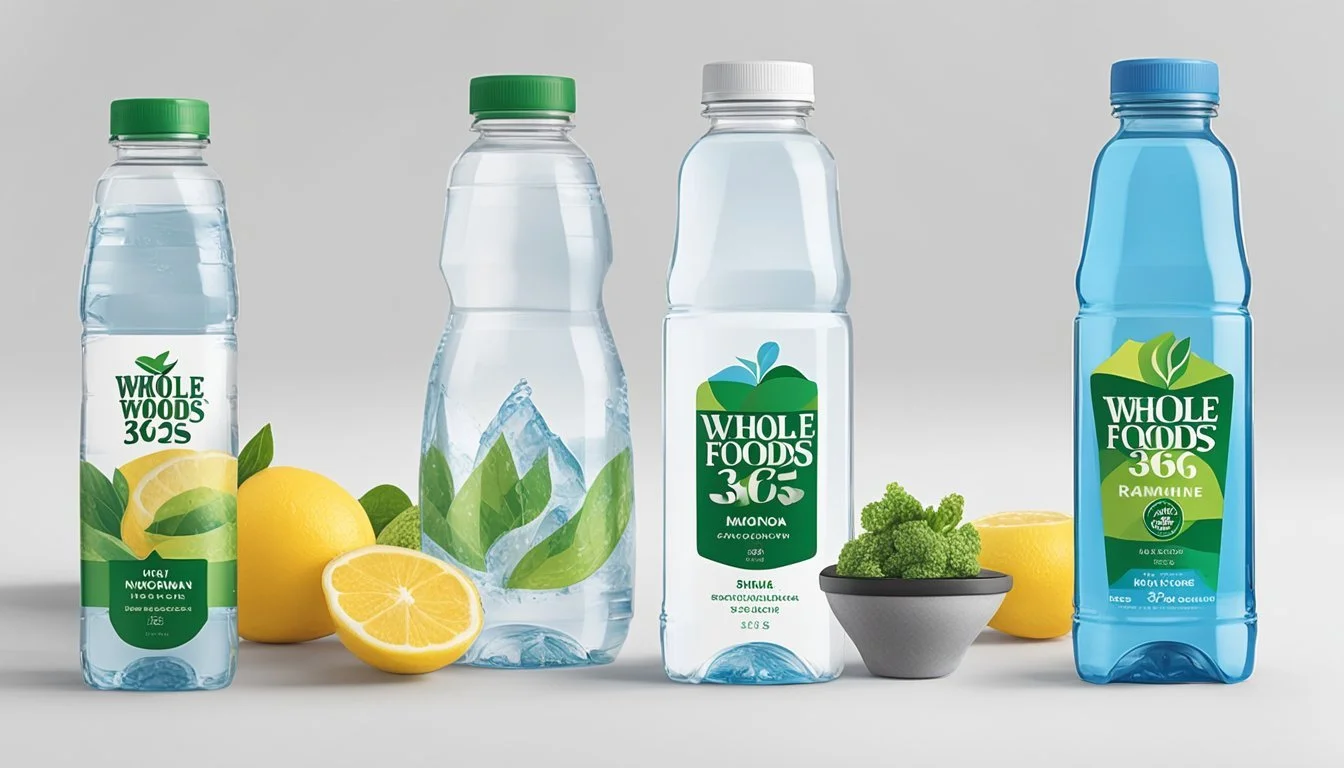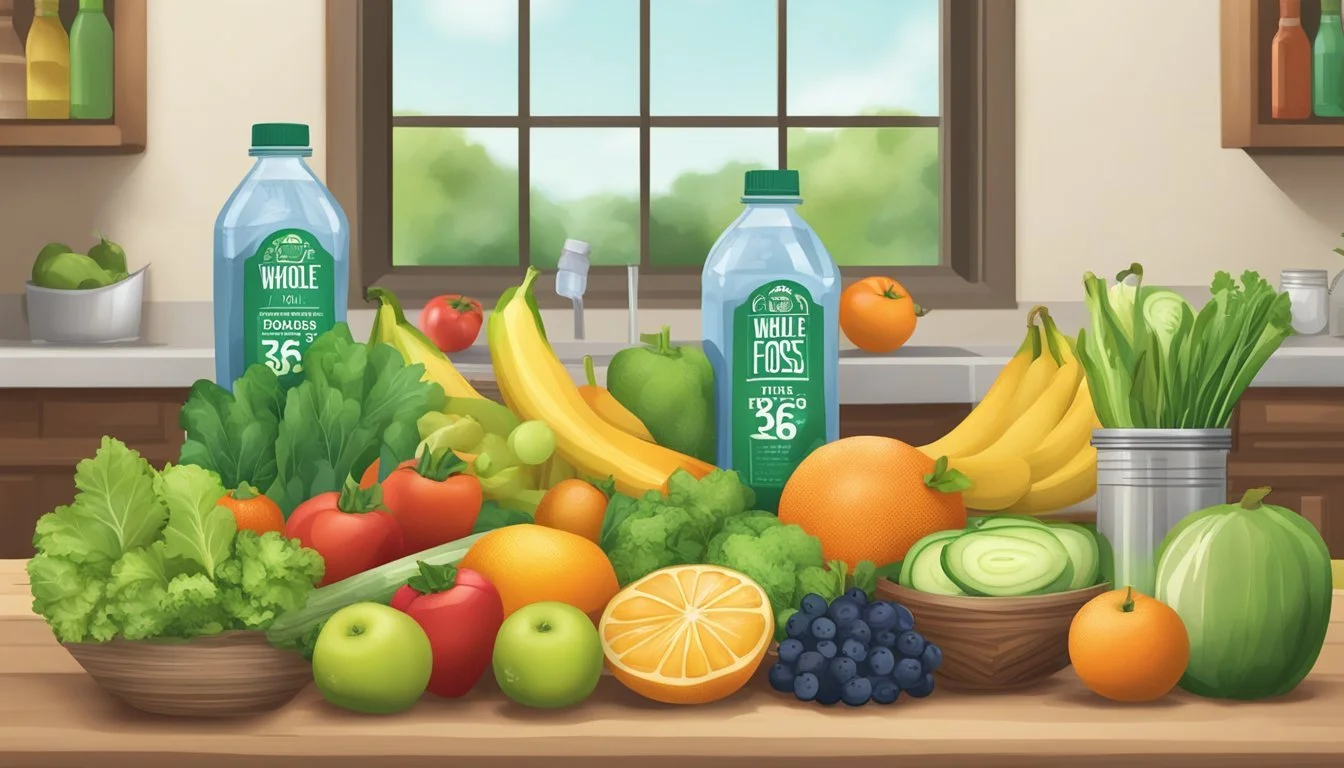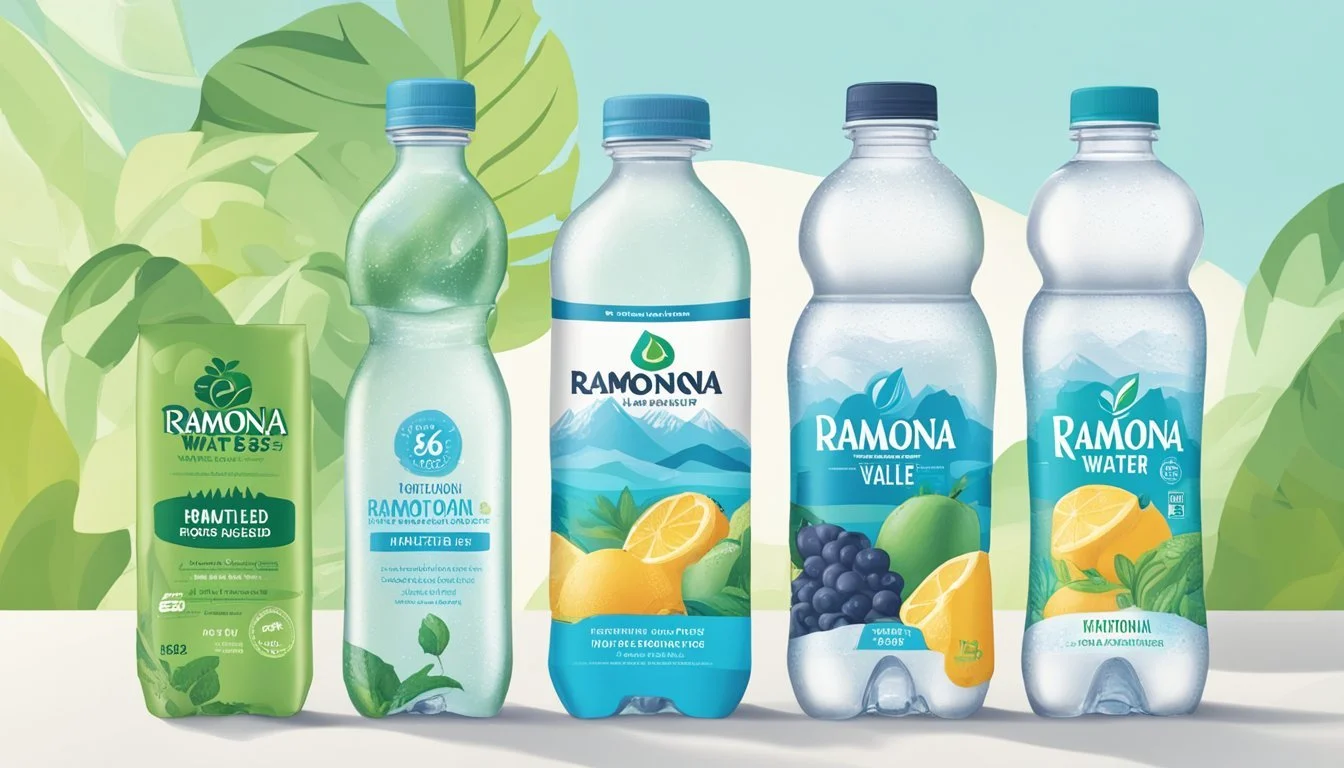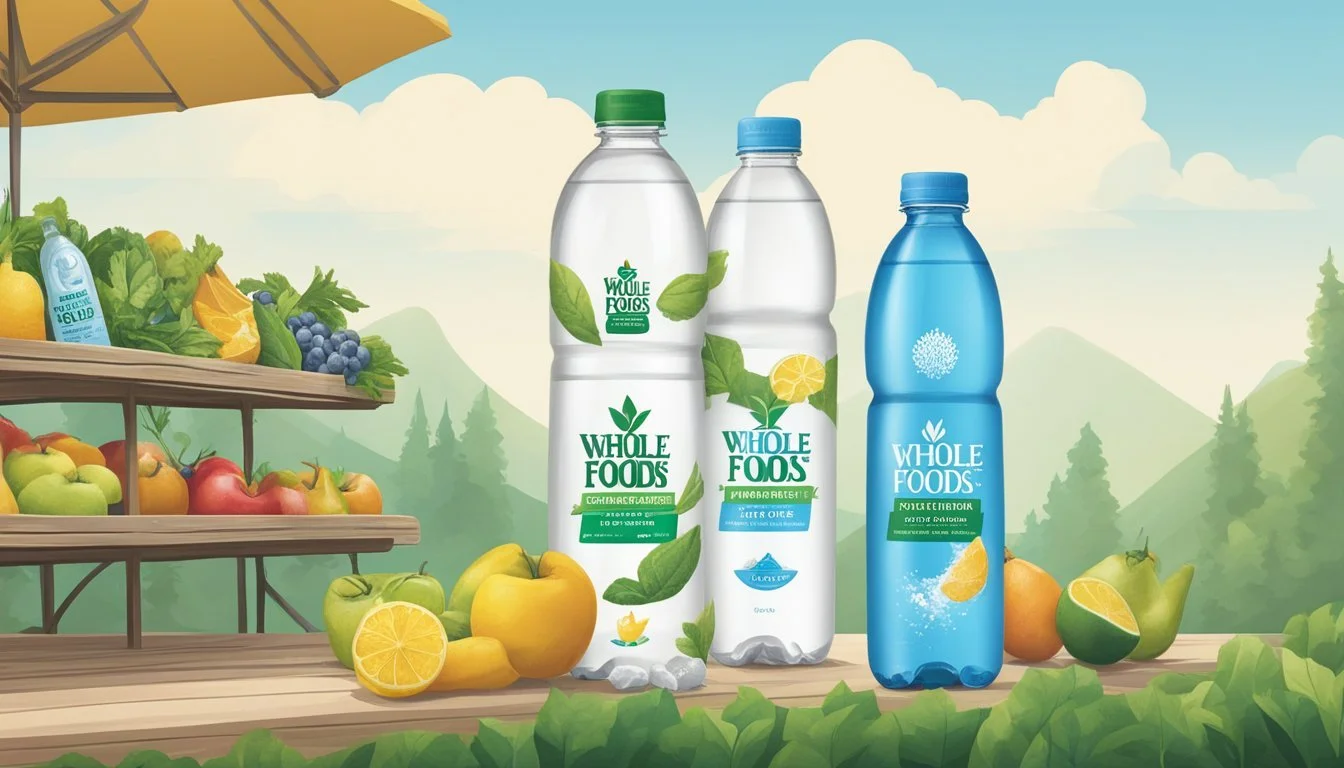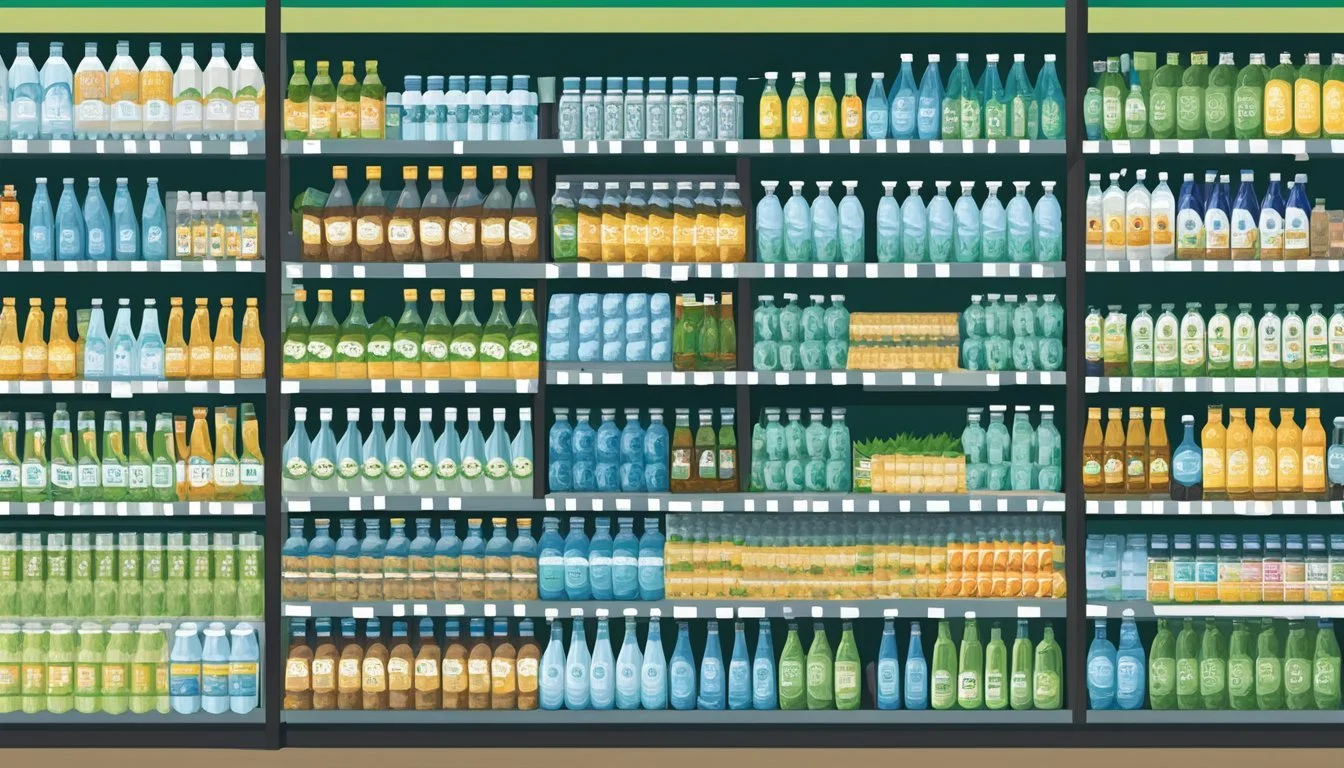Whole Foods 365 vs. Ramona
Comparing Quality and Taste of Bottled Water
Choosing the right bottled water can make a significant difference, whether for daily hydration or just a refreshing drink. When comparing Whole Foods 365 and Ramona, it becomes clear that each brand offers unique characteristics in terms of quality and taste. For those seeking a well-balanced option with a pleasant taste, Whole Foods 365 often stands out.
Whole Foods 365 bottled water is known for its neutral pH and clean, slightly sweet taste, making it a favorite among many consumers. Ramona, on the other hand, brings its own appeal with a crisp mouthfeel and distinct mineral profile. While preferences can be subjective, many find Whole Foods 365 to be a refreshing and accessible choice.
By understanding the nuances between these two brands, both casual drinkers and water enthusiasts can make more informed decisions. This comparison not only highlights their key qualities but also provides insights into why one might choose Whole Foods 365 over Ramona, or vice versa.
Understanding Bottled Water
Bottled water is a convenient option for many, but there is more to know about it, from its history to how it’s regulated. Key aspects include its origins, categories, and the labeling standards it must meet.
History and Growth of Bottled Water
Bottled water has been around since the 18th century. Initially, it was sold for medicinal purposes and sourced from natural springs, believed to have health benefits.
In the USA, the industry saw significant growth in the 1970s with the introduction of plastic bottles, which were lighter and more convenient than glass. It's now a multi-billion dollar industry, with many brands and types available, reflecting consumer demand for perceived purity and convenience.
Categories of Bottled Water
Bottled water can be divided into several categories, primarily spring water and purified water. Spring water is sourced from natural springs and is often marketed for its natural minerals.
Purified water, on the other hand, is often sourced from municipal tap water and undergoes processes like distillation or reverse osmosis to remove impurities. Other categories include mineral water, which contains specific minerals naturally, and sparkling water, which is carbonated.
Labeling and Regulations
In the USA, bottled water is regulated by the FDA, while tap water is regulated by the EPA. The FDA's regulations ensure safety and are similar to the EPA's standards for tap water.
Labels must accurately reflect the type of water and its source. The International Bottled Water Association (IBWA) also sets standards for quality and safety, which many brands adhere to. This ensures consumers get a product that meets rigorous testing and quality control.
Brand Profiles
Whole Foods 365 and Ramona are two distinct choices in the bottled water market, each with its own unique features and qualities that set them apart.
Whole Foods 365 Overview
Whole Foods 365 is the house brand of Whole Foods Market, known for its emphasis on quality and sustainability. This bottled water is sourced from natural springs and often compared to purified waters for its taste.
Whole Foods 365 offers a pH range typically between 6.8 and 7.5, which aligns closely with the neutral pH ideal for drinking water. The brand is marketed as affordable, making it accessible to a wider consumer base.
Consumers appreciate the transparent labeling and the company's commitment to environmentally friendly practices. Whole Foods 365 often highlights its use of sustainable packaging and ethical sourcing.
Ramona Brand Insights
Ramona is a lesser-known bottler but holds its own due to its commitment to purity and taste. Specializing in spring water, Ramona emphasizes the natural origins of its product, often marketed as being free from artificial additives and enhanced with minerals.
The brand's water typically features a balanced mineral composition, which contributes to a clean, crisp taste. Ramona positions itself as a premium offering, often priced higher than mass-market brands, reflecting its quality and sourcing ethos.
The brand also emphasizes sustainability, incorporating eco-friendly practices in its production and packaging to appeal to environmentally conscious consumers. Ramona's target market includes those willing to invest in higher quality and purer water options.
Source and Production
Whole Foods 365 and Ramona bottled waters differ significantly regarding their origins and production processes, impacting both taste and environmental footprint.
Origin and Water Sources
Whole Foods 365 sources its water primarily from natural springs. This often includes artesian wells and other protected sources, ensuring a balance of natural minerals. The water is marketed as spring water, which means it is collected from an underground formation.
Ramona, on the other hand, also uses natural spring sources. Unlike heavily processed water, Ramona's spring water retains its minerals. This can contribute to a distinctive taste profile and maintains the water's natural purity. Both brands emphasize the importance of using high-quality water sources to provide consumers with a reliable product.
Filtration and Purification Methods
Whole Foods 365 undergoes minimal processing to maintain its natural quality. The water is treated with basic filtration methods to remove impurities while keeping its natural mineral content. This results in a product that has a relatively neutral to slightly alkaline pH.
Ramona uses advanced filtration techniques, including reverse osmosis, to purify its water. This method effectively removes a wide range of contaminants. Despite the intensive filtration, Ramona ensures that essential minerals are reintroduced to enhance taste and quality.
Both brands aim to balance purity and taste through their distinct filtering processes. They strive to offer consumers water that is not only safe but also pleasant to drink, while considering environmental impact through their chosen methods.
Chemical Composition and Quality
Whole Foods 365 and Ramona bottled waters differ significantly in their chemical composition and quality. Understanding these differences is key to determining their health impacts and safety.
Mineral Content and Health Benefits
Whole Foods 365 water is available in various options, including Alkaline Water ionized to a pH of 9.5+, potentially providing benefits like improved hydration and acid-base balance. The Electrolyte Water and Spring Water varieties also contain minerals that can contribute to daily mineral intake.
Ramona water typically highlights its source's natural minerals. Essential minerals such as calcium and magnesium are present, important for bone health and muscle function. Regular consumption of such mineral-rich water can support numerous bodily functions.
Contaminants and Safety Concerns
Consumer Reports' recent findings have raised concerns about PFAS chemicals in bottled waters, including Whole Foods 365. Although voluntary guidelines exist to limit contaminants like arsenic and lead, the presence of PFAS—chemicals linked to health issues—raises red flags.
Ramona has not been specifically mentioned in recent contaminant reports. However, general safety and purity testing of bottled waters is crucial. Consumers should seek brands adhering to strict quality controls to avoid harmful contaminants. State advisories and Consumer Reports can be valuable resources in ensuring the safety and purity of bottled water options.
Nutritional Value and Hydration
When choosing between Whole Foods 365 and Ramona bottled water, it's crucial to look at the nutritional value and hydration efficiency. Understanding these aspects can help make a more informed choice.
Electrolytes and Hydration Efficiency
Electrolytes are vital for proper hydration. Whole Foods 365 water typically contains a balanced mix of electrolytes like calcium, magnesium, and potassium. These minerals aid in fluid balance and help maintain muscle and nerve function during intense activities.
Ramona water, conversely, may not disclose its exact electrolyte content, making it challenging to compare directly. However, adequate electrolyte levels can significantly affect how efficiently the body hydrates.
Athletes and active individuals often benefit from beverages high in electrolytes. Hydrating electrolytes can help replace those lost through sweat, preventing dehydration. Both types of water can hydrate, but attention to electrolyte content can be a deciding factor for those with higher hydration needs.
Comparing Calories and Additional Ingredients
When it comes to calories, both Whole Foods 365 and Ramona bottled water offer calorie-free options. This is key for those monitoring caloric intake. However, it’s also important to look at any additional ingredients that might be present.
Whole Foods 365 water usually does not contain any added sugars or artificial ingredients, making it a pure hydration choice. Ramona water follows a similar standard but always check labels to ensure no additives are included.
Additional ingredients like vitamins and antioxidants are sometimes found in premium bottled waters. While not always present, these additives can provide extra health benefits, such as improved immune function and protection against oxidative stress, though they are more common in enhanced water products rather than standard bottled water.
Packaging and Environmental Impact
Both Whole Foods 365 and Ramona have their unique approaches to packaging and environmental sustainability. These differences significantly influence their carbon footprints and consumer choices.
Material Use and Carbon Footprint
Whole Foods 365 employs PET bottles, which are lightweight and recyclable. Their production, however, involves substantial energy, resulting in considerable CO2 emissions. In contrast, Ramona focuses on natural spring water in glass bottles. Glass bottles are more environmentally friendly since they are reusable and recyclable, reducing their long-term environmental impact.
Both brands avoid single-use plastics wherever possible. Ramona's emphasis on glass, while heavier to transport, ultimately contributes to a lower overall carbon footprint due to its sustainability.
Consumer-Friendly Packaging Options
Whole Foods 365 offers a variety of packaging sizes, catering to diverse consumer needs. Their smaller bottles are convenient for on-the-go hydration, making them popular among active individuals. They also have larger, family-sized options which help to reduce packaging waste per liter of water consumed.
Ramona's packaging primarily features recyclable glass bottles. Their aesthetic appeal and robust nature make them ideal for home and office use. The brand also focuses on minimalistic and eco-friendly labels to further reduce their environmental footprint.
Both brands emphasize clear labeling, ensuring consumers are well informed about their environmental impact and recycling options. This transparency assists customers in making sustainable choices.
Price Points and Consumer Accessibility
Whole Foods 365 and Ramona bottled water brands cater to different consumer needs when it comes to pricing and availability. This section examines the affordability, convenience, and accessibility of each brand.
Comparing Costs and Value
Whole Foods 365 offers budget-friendly options. A 500 mL bottle of their Spring Water costs around $0.69. Their Electrolyte Water is priced at about $0.79 for 500 mL, and their Alkaline Water is $1.29 for 1 liter. These competitive prices make Whole Foods 365 a popular choice for cost-conscious shoppers.
Ramona, on the other hand, tends to have a higher price point, often reflecting its positioning in the premium segment. A 500 mL bottle of Ramona water can cost between $1.50 and $2.00. While more expensive, some consumers may perceive it as offering better quality or taste, which they find worth the extra cost.
Availability and Convenience
Whole Foods 365 products are widely accessible in Whole Foods stores, which are found in many urban and suburban areas. This wide distribution network increases accessibility and convenience for regular shoppers.
Ramona bottled water has a more selective availability, often found in specialty stores or online. This can limit access, making it less convenient for some customers. However, for those who prefer to shop online or live near stores that carry Ramona, the convenience factor remains competitive.
The choice between Whole Foods 365 and Ramona often hinges on what consumers prioritize more—affordability and widespread accessibility or premium pricing and selective availability.
Final Considerations
Consumers have varied preferences when choosing between Whole Foods 365 and Ramona bottled water. Both brands offer different qualities and can cater to various needs and tastes.
Matching Water Choice with Personal Preferences
Quality and taste often top the list for water consumers. Whole Foods 365 provides several options like spring water, electrolyte water, and alkaline water. Ramona, known for its crisp, clean taste, often appeals to those prioritizing flavor.
In terms of health benefits, alkaline water from Whole Foods 365, with a pH closer to the ideal range (6.8 - 7.5), might be preferable for those mindful of their acidic intake. Ramona’s offerings focus more on providing a pleasurable drinking experience.
Convenience is another key factor. Whole Foods 365 is widely available at Whole Foods Market outlets, making it easily accessible. Ramona may be more boutique, potentially limiting where it can be found.
Sustainability also impacts choice. Whole Foods 365 emphasizes eco-friendly practices. Ramona might offer smaller-scale sustainability initiatives. Ultimately, the right choice depends on matching preferences with available features.
Future Trends and Developments in Bottled Water
Future trends in bottled water show a clear movement towards sustainability and transparency. Whole Foods 365 is already positioning itself as a leader in eco-friendly packaging and sourcing. This aligns with growing consumer demands for products that have a lower environmental impact.
Health benefits and consumer behavior indicate increasing interest in water that offers more than just hydration. Bottled waters with added electrolytes, minerals, and alkaline properties are gaining traction. Whole Foods 365 caters to this trend with its varied product line.
Market developments suggest that brands like Whole Foods 365 and Ramona will need to continue innovating. Enhanced traceability, superior purification techniques, and unique flavor profiles could define the next wave in bottled water offerings. Keeping an eye on these trends will help consumers make informed decisions.
More About Whole Foods 365
Acqua Pana vs Whole Foods 365: Which Bottled Water is Better?
Alkaline88 vs Whole Foods 365: Which Bottled Water is Better?
Antipodes vs Whole Foods 365: Which Bottled Water is Better?
Aqua Carpatica vs Whole Foods 365: Which Bottled Water is Better?
Arrowhead vs Whole Foods 365: Which Bottled Water is Better?
Big Chill vs Whole Foods 365: Which Bottled Water is Better?
Boxed Water vs Whole Foods 365: Which Bottled Water is Better?
Cascade Mountain vs Whole Foods 365: Which Bottled Water is Better?
Castle Rock vs Whole Foods 365: Which Bottled Water is Better?
Core Hydration vs Whole Foods 365: Which Bottled Water is Better?
Crystal Geyser vs Whole Foods 365: Which Bottled Water is Better?
Deer Park vs Whole Foods 365: Which Bottled Water is Better?
Hawaii Volcanic vs Whole Foods 365: Which Bottled Water is Better?
Hawaiian Springs vs Whole Foods 365: Which Bottled Water is Better?
Ice Mountain vs Whole Foods 365: Which Bottled Water is Better?
Icelandic Glacial vs Whole Foods 365: Which Bottled Water is Better?
Just Water vs Whole Foods 365: Which Bottled Water is Better?
Liquid Death vs Whole Foods 365: Which Bottled Water is Better?
Mountain Valley Spring Water vs Whole Foods 365: Which Bottled Water is Better?
Nestle Pure Life vs Whole Foods 365: Which Bottled Water is Better?
Open Water vs Whole Foods 365: Which Bottled Water is Better?
Poland Spring vs Whole Foods 365: Which Bottled Water is Better?
Pure Life vs Whole Foods 365: Which Bottled Water is Better?
Purely Sedona vs Whole Foods 365: Which Bottled Water is Better?
Richard's Rainwater vs Whole Foods 365: Which Bottled Water is Better?
San Pellegrino vs Whole Foods 365: Which Bottled Water is Better?
Simple Truth vs Whole Foods 365: Which Bottled Water is Better?
Smartwater vs Whole Foods 365: Which Bottled Water is Better?
Solan de Cabras vs Whole Foods 365: Which Bottled Water is Better?
Talking Rain AQA vs Whole Foods 365: Which Bottled Water is Better?
Topo Chico vs Whole Foods 365: Which Bottled Water is Better?
Weird Water vs Whole Foods 365: Which Bottled Water is Better?
Whole Foods 365 vs 1907water: Which Bottled Water is Better?
Whole Foods 365 vs BodyArmor: Which Bottled Water is Better?
Whole Foods 365 vs CBD Living: Which Bottled Water is Better?
Whole Foods 365 vs Crystal Lake: Which Bottled Water is Better?
Whole Foods 365 vs Essence pH10: Which Bottled Water is Better?
Whole Foods 365 vs Kirkland Signature: Which Bottled Water is Better?
Whole Foods 365 vs Proud Source: Which Bottled Water is Better?
Whole Foods Italian Still Mineral water vs Whole Foods 365: Which Bottled Water is Better?
Zephyrhills vs Whole Foods 365: Which Bottled Water is Better?


